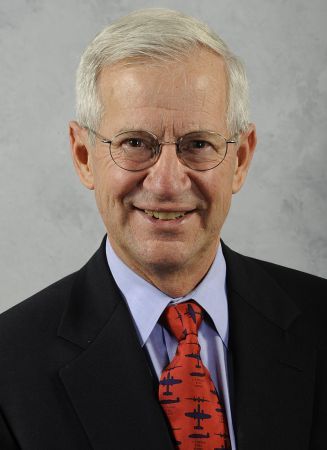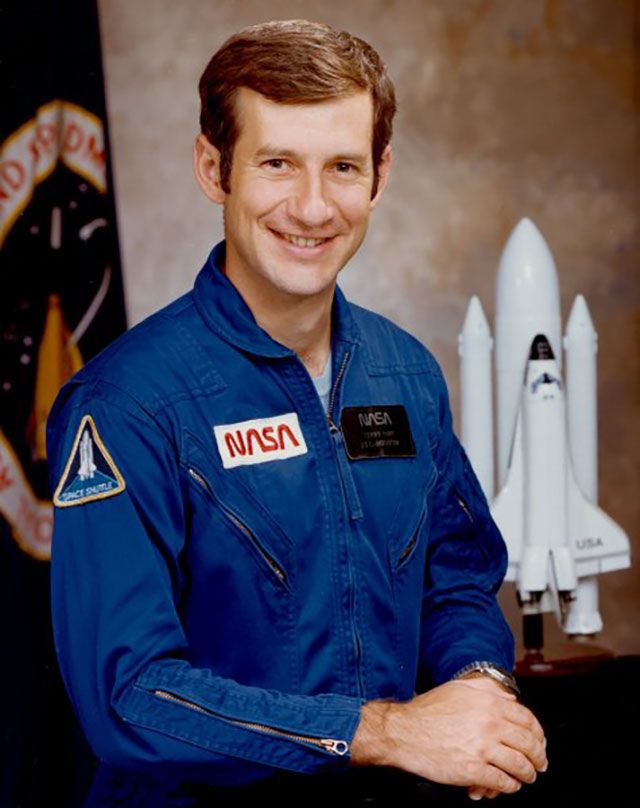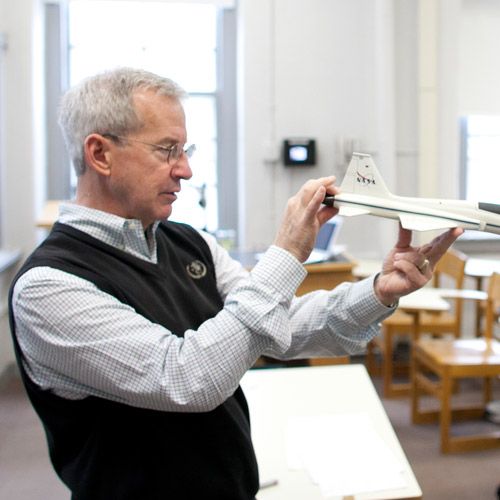The Morning Call
Read: Hellertown astronaut inspires students: Terry Hart, Challenger shuttle veteran, helps youngsters envision space travel (November 9, 2019)
Hart spoke to K-8 students at St. Anne School in Bethlehem, Pa., about space exploration ("He did what he could to make complicated space terminology palatable, comparing the Solar Maximum Satellite that he corralled on the shuttle to the size of a school bus and describing the Small Magellanic Cloud dwarf galaxy as a nursery of baby stars.") and the potential for new discoveries ("Asteroids, for example, are the apple of scientists' eyes right now, he said, untouched for all the universe's 5 billion years.")
Rutgers School of Engineering Alum Q&A
Read: From Rutgers to the Space Shuttle Challenger: Alumnus Astronaut Terry Hart Looks Back to the Future of Space Exploration (August 2019)
Hopes for the future of space exploration:
"My number one priority would be an asteroid recovery mission that would bring an asteroid—or pieces of an asteroid—back to earth. This is something that scientists have wanted for a number of years, because it would help us better understand the origins of the solar system and answer other science questions—and would probably be more interesting than landing on the moon again. Yet before we would launch for Mars, we’d want to learn how to live on the moon."
The Fox News Rundown Podcast
Listen: Looking Back and Looking Ahead 50 Years After the First Moon Landing (aired July 19, 2019)
What it’s like to be in space:
“Any astronaut will tell you their first mission, particularly, is a very, very steep learning curve. Most people don’t feel too good the first couple days in space—your tummy tends not to cooperate too much. About two out of three people get sick. But after a couple days everyone kind of settles down and you learn how to move in weightlessness. But it’s really not for the faint of heart.”
Referring to Richard Branson (Virgin Galactic) and other space tourism advocates:
“I think they’re misleading people a little bit as to how rigorous it is. In my view, and I think any astronaut that’s gone, it’s well worth the years of training and all just for the view out the window, but it’s not something you just kind of pick up one day and say, gee, I’ll just go up in space for a few days and come back.”
WFMZ's 69News at Sunrise
Watch: 69News at Sunrise: Terry Hart, former astronaut (aired July 20, 2019)
The future of Mars missions:
“When [President John F.] Kennedy said ‘we’re going to the moon,’ so much had to be invented during that decade to get us to the moon. To go to Mars, we don’t have to invent anything. We have to build a lot of things—it’s a logistics problem—we just have the political will to do it. We understand the science and we know how to do it today.
The physics challenge of landing on Mars versus orbiting it:
“When you go down to a planet, you’re going down into a gravity well, so you have to get back out of that. I explain to my students, ‘Picture a rocket here on Earth that’s designed to go to Mars. A big rocket, right? To get from Mars back to Earth, we’ve got to build that rocket on the surface of Mars. Not an easy thing to do.”



